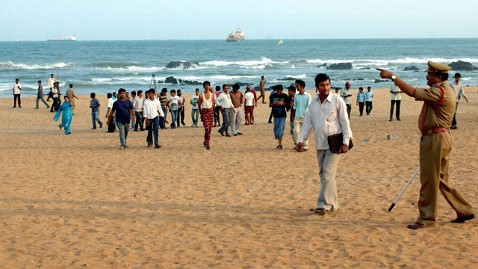Indonesia's Large Quake, Small Tsunami Explained

Image credit: AP Photo
When it comes to the earthquakes and subsequent tsunamis that hit Indonesia in 2004 and earlier today, "mechanisms" made all the difference, scientists say.
When the earthquake struck 270 miles from Aceh's provincial capital today, registering a massive 8.6 magnitude, tsunami warnings were issued as residents rushed to higher ground.
In the end, the large quake triggered only a small wave of water that did very little damage.
Don Blakeman, a geophysicist with the U.S. Geological Survey, attributed the small waves to a "strike-slip" mechanism. During a strike-slip quake, the two sides of the fault or where Earth's crust erupts move laterally in relation to each other.
"Because they are just sliding horizontally, you don't get a lifting or a dropping of the sea floor," Blakeman told ABC News. "It's a different sense of motion."
He said that today's tsunami was about 200 miles from the epicenter of the December 2004 quake off the west coast of Sumatra.
During that 9.1-magnitude earthquake, Blakeman said, the two sides along the fault created lots of vertical movement called a "thrust" mechanism. As one side of the fault went up about 10 meters, the other went down, creating a large column of water.
That tsunami killed 230,000 people and devastated Indonesia's islands.
Blakeman said that spots like the southwest side of Sumatra, off the coast of Chile and Japan - which was flattened by an earthquake and tsunami last year - saw mostly thrust faults because in those areas one crustal plate was pushing down under another plate.
He said that California was most famous for strike-slip fault movements.
Blakeman said many parts of the world were located on faults with principle strike-slip and thrust mechanisms or both.
ABC News' Akiko Fujita contributed to this story.